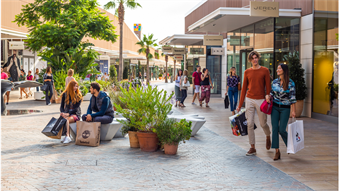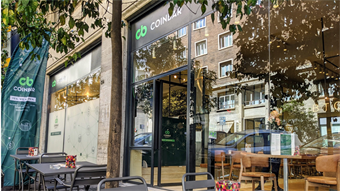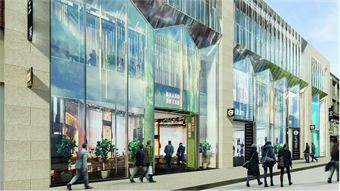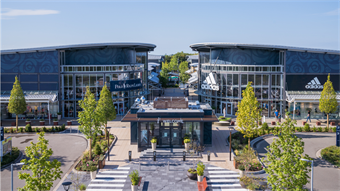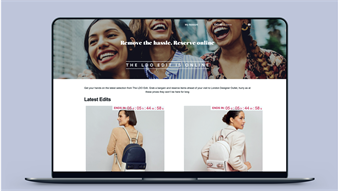Retail relationships drive success for Neinver
- In Interviews
- 16:18, 26 March 2020
- 11522 Views
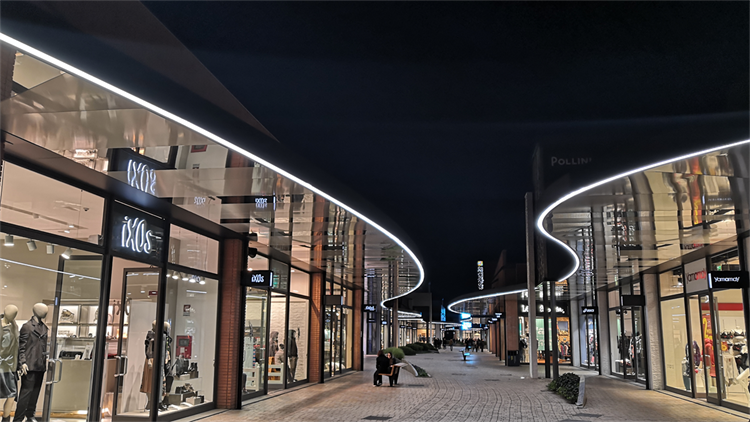
From enhancing the customer journey to strengthening its relationship with brands, outlet centre specialist Neinver has mapped out a strategy where everyone wins.
If you want to go far, go together. Pan-European outlets specialist Neinver, which achieved sales in excess of €1 bn in 2019, has built a customer and brand-centric business in recent years in which outstanding partnerships only add to success.
impressive sales growth figures - around 7% on average per annum over the past five years - is credited to ‘Neinver’s high specialisation and the evolution towards a customer-centric approach’, according to Neinver managing director Carlos González.
‘Whilst the outlet industry offers great opportunities when combined with a specialised management model, we need to understand the fast-evolving retail market to build a sustainable growth strategy,’ he notes.
While commercial appeal remains key, Neinver has shown that it is crucial to adapt the centres to the evolving needs of brands and consumers and transform physical shopping into a memorable experience to continue growing results.
‘This last year we renovated some of our strongest centres and we have launched several retail initiatives to increase the destination component of our portfolio and the value we create for consumers,’ González says. ‘Among others, these include redesigning the leisure and F&B offer, enhancing the customer journey, dropping new and exciting content on an ongoing basis and building an even closer relationship with brands, as their success is our success.’
He adds: ‘In the end, we are evolving beyond the “outlet” part of outlet centres. Although commercial mix remains key, we are not competing on mix but on value. And as consumers have many shopping alternatives nowadays, to attract them we need to build on our value proposition to give them more for their time and money.’
Brand appeal
Neinver’s business is not only about providing brands a channel to sell their surplus, but about supporting them to connect with shoppers and creating brand value, González explains.
‘Since their introduction in Europe, savvy outlet operators have developed a very close and synergetic relationship with brands, listening to them and working hand in hand, and this has been essential to the continued growth of the industry.
‘Today, shops at our centres offer the same experience standards as their full-price stores. The main challenge right now is that brands’ needs are evolving, as are those of their consumers.’
Part of this requires walking in retailers’ shoes, suggests González. ‘We need to think as retailers rather than as real estate operators and support them in clearly transmitting their value proposition and engaging with consumers. This includes creating brand excitement through new store formats, providing a curated product selection, offering them flexible leasing terms, and supporting their strategies with insightful 360° data on our visitors’ customer journey.’
Food for thought
The significance of F&B for dwell times and performance is a known fact in the industry, but NIENVER has been fine-tuning its approach in recent times for even better results. Across Neinver’s portfolio, the space dedicated to F&B has doubled in the last five years, shifting on average from a 7-8% weighting to 15-20%.
‘Food and beverage is one of the most visible elements in the “destination equation” of a centre,’ says González. ‘When we think about F&B, it’s not only about providing options for making a needed stop when you go shopping but is intrinsically related to the concepts of experience and quality time. This is why crafting a place where you have exciting dining options, where you can shop and engage with your favourite brands and you can relax and spend quality time is a much stronger proposition than the traditional concept of “going shopping”.’
Despite the strategic plan covering the whole portfolio, González underlines that Neinver takes a bespoke approach to each scheme. ‘We are analysing case by case to craft a compelling F&B offer that can act as an anchor to attract visitors. This includes not only quantity but also quality and variety. And it also means understanding how F&B operators’ needs differ from other retailers’ needs, including a greater impact of peak hours and seasonality. The operational part is vital as we want to provide excellent hospitality service to our visitors in every single detail.’
Recent refurbishments
Neinver’s attention to refreshing its portfolio is generating results. Last year alone, Neinver's 16 outlet centres welcomed more than 45 million visitors, thanks also to key refurbishment programmes.
Located near Milan, Vicolungo The Style Outlets has been expanded twice and remodelled to evolve over the years, creating a recipe for success. The centre currently features 150 boutiques of major international brands in over 34,000 m² of retail space.
The most recent renovation transformed the main square, as well as adding a new information point for customers, a new playground area for kids and a new lounge area for business meetings, tourists and VIP guests. The restyling was led by the prestigious international architecture studio Chapman Taylor.
‘The restyling of the Vicolungo centre is part of our strategy of creating more value for brands and customers,’ González says. ‘Consumers are paying with their time and they expect more in return. The works at Vicolungo The Style Outlets have completely changed the atmosphere of the centre and raised the service standards, and are also contributing to increase its premium offer.
‘This means we are also providing more value for the consumer. In the end, all parts of the equation are intrinsically linked and help make the difference when deciding where you want to spend your time.’
Vicolungo has also renovated its F&B offer, including the introduction of premium offerings such as “ANTONINO, il Banco di Cannavacciuolo”, a new smart gourmet space by acclaimed Italian chef Antonino Cannavacciuolo; and Sapore, a gourmet pizza restaurant.
Although the refurbishment was only completed last year, Vicolungo has already contributed to Neinver's growth metrics.This is a common thread for the group, which also recently refreshed the F&B offer of Montabaur The Style Outlets, a centre Neinver has been operating since its opening in 2017.
Situated in a strategic location between Cologne and Frankfurt, with a catchment area of 17.5 million people within a 90-minute drive, Montabaur features 13,900 m² of GLA and more than 70 top brands, with an occupancy rate of 100%.
Last year’s overhaul, completed in November, saw Neinver divide the centre’s big buffet restaurant into three units with differentiated propositions, namely Dean & David, Pommes Freunde and Starbucks. In just a couple of months, NEINVER reported that F&B sales rose exponentially, while also boosting Montabaur’s overall results with double-digit increases.
‘A strong food and beverage offer can have a halo effect, increasing the overall attractiveness of the centre and becoming a competitive advantage,’ González explains. ‘When analysing the F&B offer of a centre, we do this in terms of quantity of the offer, adaptation of the offer to our visitors’ needs and the quality of the service provided.
‘One of the strongest positives of the Montabaur centre is that it benefits from a large primary catchment area and from excellent transport links, so having the right food and beverage offer in place could really make a difference in strengthening the centre as a local destination,’ González notes.
Ongoing improvements
Neinver also embarked on a new refurbishment of Getafe The Style Outlets last year, to enhance its commercial mix. This mature centre, located in Madrid, benefits from a densely populated catchment area and receives around 5.5 million visitors each year. The centre features close to 21,000 m2 of GLA and over 60 top international and Spanish brands.
Although the centre, which opened in 1999, was expanded in 2008 and refurbished in 2013, Neinver started remodelling works last year in the wake of a big store closure. The works have enabled the outlet to introduce 10 new sought-after brands, some of them exclusive in the country, such as Jack & Jones and O’neill; enlarge some successful stores such as Adidas, Nike, Pull & Bear and Stradivarius, with some of them even tripling their previous space; and enhance the entire atmosphere of the centre, creating more modern, comfortable and attractive spaces for visitors.
The centre has recorded continuous increase in sales, with a 45% increase in the last five years and the best may be yet to come, as the largest part of the refurbishment completes in March 2020.
‘Getafe The Style Outlets is one of the first outlet centres the company opened, more than 20 years ago, and is currently one of the most successful,’ confirmed González. ‘Over the years, the centre has evolved to adapt to market needs and has built itself into a preferred destination for visitors and brands. This was an excellent opportunity to increase its commercial offer by introducing new brands, enlarging successful stores already at the centre and continuing to enhance the space for visitors.’
Lessons for the sector
From relative retail outlier to an exemplary business model, the rise and rise of outlet centres has much to teach the wider retail industry.
‘The key to outlet centres’ success from the consumer’s standpoint is the attractiveness of their value proposition: top brands at great discounts,’ says González.
‘This concept combines an experiential component and the idea of conscious shopping, which has allowed the industry to benefit from greater resilience to changes in the retail market and to periods of economic recession.
‘It is about finding a luring value proposition that resonates with the consumer and evolving over the years to keep fulfilling a need,’ he adds.
‘Moreover, the initial lack of awareness about the concept resulted in new leasing structures different from traditional retail formats, including variable rents and shorter-term leases. These structures have contributed to drive footfall as they involve a stronger commitment from centres’ operators, with ongoing support to the brands, greater efforts allocated to marketing, and more rotation when a brand doesn’t work at the centre.’


